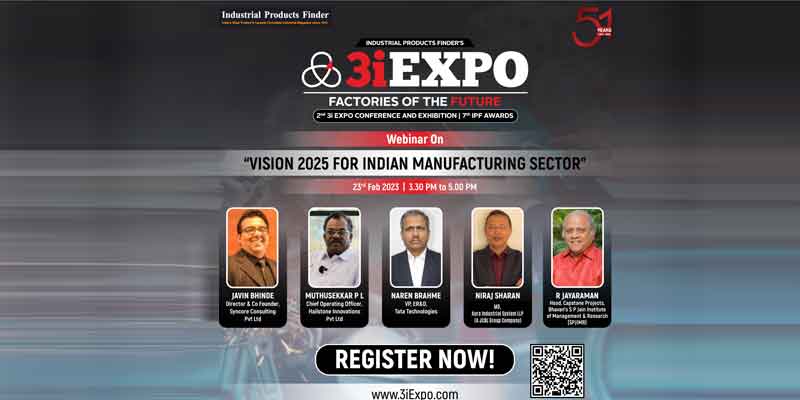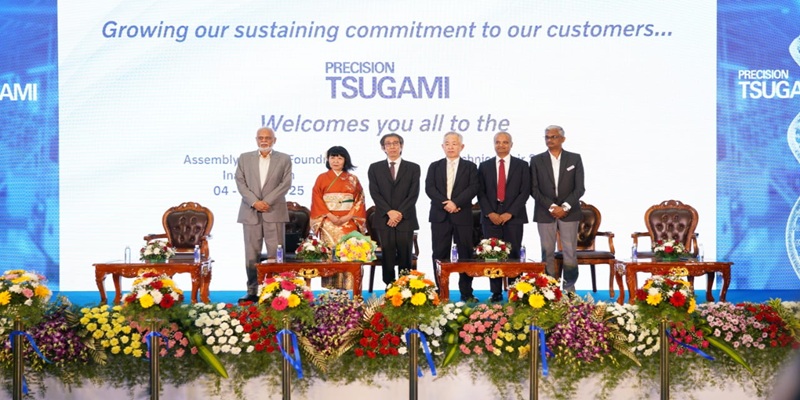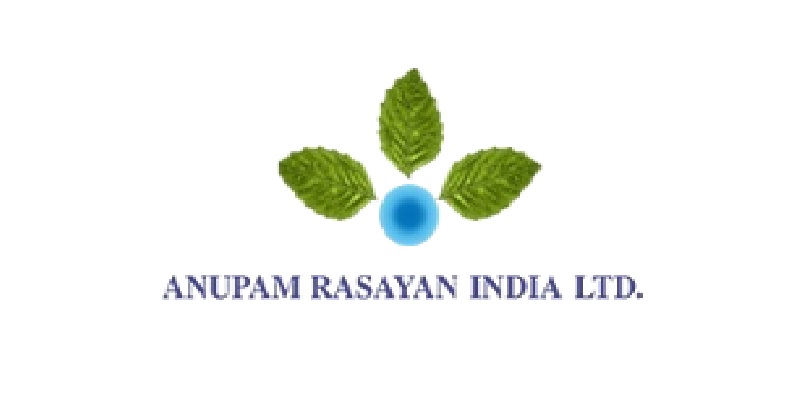Schedule a Call Back
IPF’s 3i EXPO webinar: Vision 2025 for Indian manufacturing sector
 Events
Events- Feb 25,23

The Government of India (GoI) is looking to boost manufacturing sector’s share in GDP to 25 per cent (from present 16-17 per cent) by 2025 through initiatives like National Manufacturing Policy (NMP), Production Linked Investment (PLI) schemes for 13 sectors, etc. In the post-Covid period, while Indian manufacturers faced many challenges (like supply chain disruptions and rising raw material prices), it also provided them with a plenty of growth opportunities with global companies looking at alternate sourcing destinations away from China.
Against this backdrop, Industrial Products Finder (IPF) organised a webinar – titled “Vision 2025 for Indian Manufacturing Sector” - on February 23, 2023, to discuss and analyse the challenges faced by Indian manufacturers and also provide probable solutions to achieve the goal of Vision 2025.
The session was moderated by Rakesh Rao, Executive Editor, IPF, and was participation for five eminent speakers: Javin Bhinde, Director and Co-Founder, Syncore Consulting Pvt Ltd, Muthusekkar P L, Chief Operating Officer, Hailstone Innovations Pvt Ltd, Naren Brahme, Vice President (E R&D), Tata Technologies; , Niraj Sharan, Managing Director, Aura Industrial System LLP (A JCBL Group Company), and Prof R Jayaraman, Head, Capstone Projects at Bhavan's S P Jain Institute of Management and Research (SPJIMR).
This virtual panel discussion is the first in the series of webinars that would be hosted by Industrial Products Finder as a part of 3i EXPO 2023, which will organised by IPF on May 19-20, 2023 at Nehru Centre, Mumbai. The 2nd Edition of IPF’s 3i EXPO 2023 – with the theme of “Factories on the Future” – aims to bring all the stake-holders who are involved in increasing “Productivity” and “Green Quotient” of factories on one platform.
The Feb 23rd webinar resulted into an enlightened discussion about factors pertaining to Indian manufacturing industry. Discussing the challenges, solutions and presenting their views on “Vision 2025” for manufacturing, the panellists provided a lot of valuable insights.
A change in mindset and working operations
According to Muthusekkar P L, COO, Hailstone Innovations Pvt Ltd, who has over three decades of industry experience, the Indian manufacturing sector has been growing leaps and bounds in the last decade, but needs to grow at a faster pace in the coming years. He said, “If you look at the previous decades since 1970, the contribution of manufacturing to GDP has always been about 16 per cent and has never gone beyond. In fact, it has come down to some extent in the recent years.” He also emphasised on the importance of women empowerment and increasing their participation in the manufacturing. Sectors like mining have huge potential and can play a big role in boosting the manufacturing growth.
Niraj Sharan, MD, Aura Industrial System LLP, took the conversation back to 2000s when the companies like Larsen and Toubro (L&T) were making the world's best critical process equipment and were more known for their expertise outside India (than within the country). He said, “We are pivoting from the back-end, labour-intensive manufacturing to a design and innovation led product line in manufacturing. Today, the SME sector, which plays an important role in India’s manufacturing sector, is beginning to adopt process and compliance driven approach. I believe that there are over 40 per cent inefficiencies in internal systems and processes in companies, and they have to first address this issue. There is also a need to have a new approach to everything. Make in India is nothing more than a change in mindset for me.”
India’s manufacturing has the potential to reach $ 1 trillion by 2025, according to Naren Brahme, Vice President (E R&D), Tata Technologies. . He said, “India has got the largest workforce that is well verse in English, IT and engineering. Entire world has acknowledged India as a hub for IT-related services since last two to three decades. But, now it's a time for manufacturing sector to rise to the occasion and support the global manufacturing industry. Globally, industries are working on 3D data in manufacturing. In India, one of the challenges is to educate blue collar workforce in industries on the updated technologies and digitisation. Few OEMs have also included women workforce in the assembly line, resulting in better productivity and quality.”
Elaborating on the hurdles faced by Indian manufacturing sector, Javin Bhinde, Director & Co Founder, Syncore Consulting Pvt Ltd, said, “ “Internal inefficiencies in processes and ecosystem is one of the key challenges. I have seen many cases where level of inefficiencies or the potential for improvement in an organisation is as high as 60 to 70 per cent. Besides, the industry also has to understand the changing consumer preferences in the fast pace economy. The manufacturers have to closely work with R&D team to make the product enhancements. Companies should also look at better collaboration between various stakeholders like raw material suppliers, R&D, production, quality inspectors, third party agencies, etc. India’s automobile industry has been a leader globally and has shown how efficient processes can result in reduction in lead time & inventories, excellent products, and high customer satisfaction. Other industries can learn a lot from it.”
Prof R Jayaraman, Head, Capstone Projects, Bhavan's S P Jain Institute of Management & Research (SPJIMR) , opined, “Indian manufacturing sector is a spectrum. On the one side, we have the MSMEs and on other end we have the large organised behemoths. There are a lot of challenges to overcome for the industry like lack of credible data, lack of finance and system, etc. If we compare the capital needed to set up an IT park is quite less in comparison to investment required to establish a steel plant or a power plant. Bottlenecks in MSMEs are low volumes, high cost, low tech, interrupted operations, inadequately resources, etc”
Vision 2025
Sharing his Vision 2025, Javin Bhinde said, “We need a torchbearer who can lead India forward into manufacturing on all aspects, whether it is policy, infrastructure, or access to raw material, manpower, energy, etc. In addition, there is a need to replace the concept of VUCA (Volatility, Uncertainty, Complexity and Ambiguity), which originated in the Western countries, with ‘CHIT’, which represents for Courage, Hope, Ingenuity and Trust.”
Naren Brahme listed his future vision in three areas; First, bridging the technology gap between industry requirement and skill resources; Second, focus on the increased role of Indian engineering service provider to shape the manufacturing industries; and Third, developing a robust supply ecosystem.
Referring to the Latin phrase ‘tempus est nunc’, which means ‘time is now’, Niraj Sharan, said, “I truly believe the time is now for India (industry as well as the Government) to take decisive action. This is not about a few decades, this is about this century that can be India's century; if we do it right. We are the only competitor to ourselves. The Brand India is very big and can help reach to greater heights.”
Muthusekkar mentioned, “We should focus on industrial corridor development program as mentioned by PM Narendra Modi in his Republic Day speech. That means there will be a single product which will be developed for the world from each district in India. We need to focus more on the local, as from local only we can go global. At the same time, we need to do a lot of improvements in terms of ease of doing business. Many steps have been taken in this direction, but still lots need to be done.”
Prof Jayaraman added, “When we look at our vision to achieve five trillion dollar economy by 2025, it means the growth rate has to be around 20 per cent year. We have to set a lot of goals for that, poverty should go down substantially, strengthening Direct Benefit Transfers (DBT), increase equitable distribution of outputs etc. This is going to happen with start-ups and the technology usage in MSMEs. Highly educated and skilled workforce is another requirement. All the technology needs skilled workforce, and therefore, online professional education becomes very critical. Integrity and honesty are must for any entity or business. We have left behind a period of scams and corruption and I hope that will continue. Finally, the continuation of PLI scheme with emphasis on high-tech and making Indian products globally competitive are also very important.”
(This is a report filed by Ayushi Khandelwal)
To see the complete Webinar on YouTube Click Here
Related Stories

Wipro Hydraulics Marks 50 Years with Global Expansion and Innovations at EXCON 2025
Wipro Hydraulics celebrates 50 years, showcasing global growth, advanced technologies, and new innovations at EXCON 2025.
Read more
India’s demand for high-precision machine tools is rising: K Balasubramaniam
In this interaction with Rakesh Rao, K Balasubramaniam, Founder, Tsugami Precision India, discusses the evolving machine tools landscape and the company’s role in shaping India’s manufacturing t..
Read more
Tsugami Inaugurates New Precision Engineering Facility in Tamil Nadu
The new infrastructure enables increased indigenous production of Tsugami machine tools.
Read more














